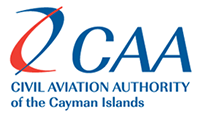Aeronautical Information Service
One of the least known but yet a vital role in support of international civil aviation is that of an aeronautical information service (AIS) unit. The objective of the AIS Unit is to provide a timely flow of accurate information necessary for the safety, regularity and efficiency of international air navigation. AIS performs an essential role in providing all the necessary airport and en-route information required by visiting aircraft as well as notifying any sudden changes to previously provided information.
The responsibilities of AIS are many and include the collection and dissemination of information on the serviceability and availability of aerodrome facilities including lighting, navigation aids and emergency services as well as providing warnings of potentially hazardous conditions. In addition, the unit will be responsible for collecting and publishing survey data to identify any changes in the local obstacle environment and will maintain databases of aircraft movements and other information required by either the Airport Authority or the Civil Aviation Authority.
A major responsibility of the unit is to receive and transmit aircraft flight plans making the details of incoming and outgoing flights available so that national and international air traffic services can plan and sequence the safe movement of aircraft in their respective airspace.
In the Cayman Islands the Aeronautical Information Service (AIS), is a function of the Cayman Islands Airports Authority, and is responsible for the collection and dissemination of information for the entire Territory together with the airspace over the high seas encompassed by its Terminal Control Area. The Aeronautical Information Service consists of AIS Headquarters at Owen Roberts International Airport and AIS unit at Charles Kirkconnell International Airport, Cayman Brac, with the Kingston (Jamaica) acting as the International NOTAM Office.
